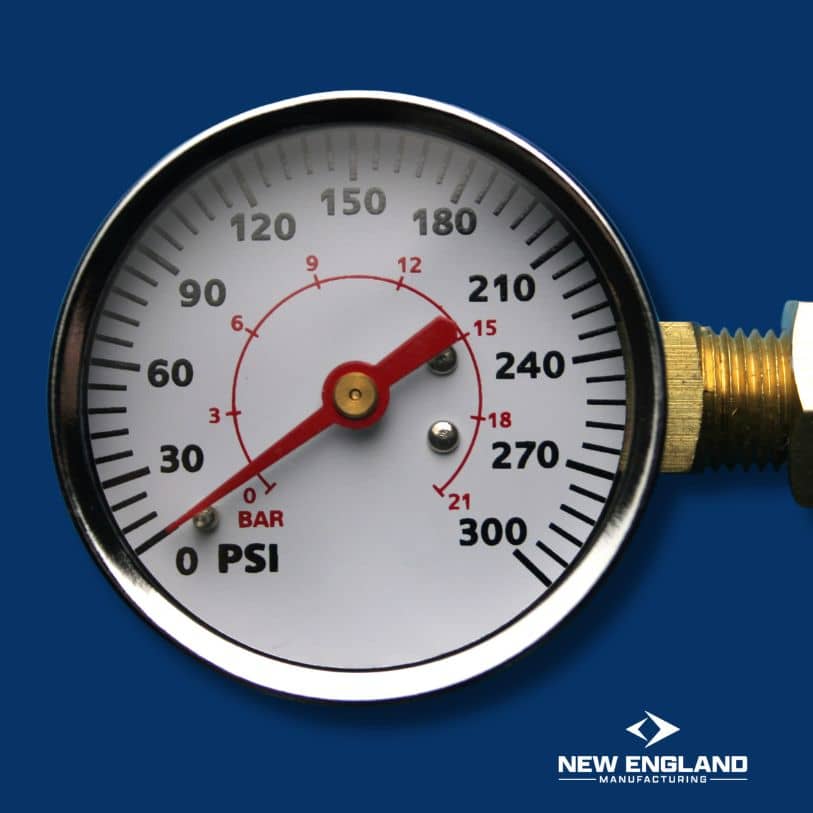Understanding Pressure: A Deep Dive into Absolute and Gauge Pressure
In the fascinating world of physics and everyday mechanics, we often encounter terms like “absolute pressure” and “gauge pressure.” These concepts are pivotal in a wide range of fields, from engineering to meteorology. This blog post aims to demystify and simplify these concepts for a broader audience. Whether you’re a student grappling with physics, a professional in a pressure-dependent industry, or simply someone with a curious mind, this exploration will clarify the intricate world of pressure measurements. We will delve into how pressure affects our world and differentiate between absolute and gauge pressure in a clear, accessible manner.
Understanding the Basics of Pressure Measurement
Pressure, at its core, is the force exerted over a specific area. This fundamental concept is key to grasping the nuances of pressure measurement. In scientific terms, we often express pressure in units like Pascals or pounds per square inch (PSI).
To fully grasp the concept, it’s essential to distinguish between the two primary types of pressure measurements. Absolute pressure encompasses all the pressure in a system, including atmospheric pressure. Consider the scenario of being deep underwater; here, the absolute pressure combines the water pressure with the atmospheric pressure above. On the other hand, gauge pressure measures pressure relative to atmospheric pressure. It’s like considering the additional pressure applied in various scenarios. Both types of measurements play pivotal roles in different contexts, and understanding this distinction can clear up many misconceptions about pressure.
Exploring Absolute Pressure: The Complete Picture
Delving deeper, absolute pressure measures the total pressure within a system, factoring in atmospheric pressure as well. It’s analogous to calculating the complete weight of a container, including its contents. This measurement approach is critical in scientific and engineering disciplines, especially where accurate pressure readings are crucial.
For instance, in the realm of aviation or deep-sea exploration, knowing the absolute pressure is essential for ensuring operational safety and functionality. Absolute pressure always registers as a positive value, beginning from a zero baseline, which represents a complete vacuum. This standard reference point is indispensable, as it ensures consistency and reliability in all absolute pressure measurements across various applications.
Gauge Pressure: The Relative Perspective
Shifting focus to gauge pressure, this measurement approach considers pressure relative to the surrounding atmospheric pressure. It’s akin to determining the net weight of an object by subtracting the container’s weight. Gauge pressure is particularly useful in everyday scenarios, such as when checking the air pressure in car tires or monitoring HVAC systems.
Interestingly, gauge pressure can register as either positive or negative. A positive gauge pressure indicates that the system’s pressure exceeds atmospheric pressure. Conversely, a negative gauge pressure, also known as vacuum pressure, signifies that it is lower. In the broader context of “absolute and gauge pressure,” understanding gauge pressure’s relative nature is crucial for applications where the difference in pressure, rather than the total pressure, is of primary concern.
Practical Applications of Absolute and Gauge Pressure
The practical implications of understanding “absolute and gauge pressure” are vast and diverse. In meteorology, for example, absolute pressure readings are indispensable for predicting weather patterns and comprehending atmospheric phenomena. Weather stations rely on these measurements to provide accurate forecasts.
Similarly, in the automotive industry, gauge pressure often takes center stage. Checking the air pressure in a vehicle’s tires, for instance, involves reading gauge pressure. This measurement informs drivers about the additional pressure in the tires compared to the outside air, which is crucial for maintaining optimal tire health, safety, and vehicle performance.
The medical field also utilizes both types of pressure measurements extensively. Blood pressure monitors, for instance, use gauge pressure to assess the force of blood against artery walls. In contrast, hyperbaric oxygen therapy chambers rely on absolute pressure measurements for precise control of the environment, vital for patient safety and treatment effectiveness. For more details visit us at https://www.nemfg.com/.
The Importance of Measuring Both Absolute and Gauge Pressure
In various scenarios, the simultaneous measurement of both “absolute and gauge pressure” is critical for ensuring safety and precision. In industrial environments, such as chemical plants or refineries, monitoring and controlling gas and liquid pressures is fundamental for operational safety. Absolute pressure measurements can identify potentially hazardous pressure changes that might not be apparent from gauge pressure readings alone.
Moreover, in the field of aerospace, the reliance on both types of pressure measurements is non-negotiable. Aircraft and spacecraft operate under vastly different atmospheric conditions, ranging from the low-pressure environments of high altitudes to the vacuum of space. Aerospace engineers depend on both absolute and gauge pressure readings to design systems that can withstand these extreme conditions, ensuring the safety of the crew and passengers.
This dual-measurement approach offers a more comprehensive understanding of environmental conditions and the forces at play. It enables professionals across various fields to make informed decisions, leading to safer and more efficient systems and processes.
Technology and Pressure Measurement: Tools for Precision
In the realm of “absolute and gauge pressure” measurement, modern technology plays a pivotal role. A variety of instruments, such as barometers, manometers, and digital pressure sensors, are employed to capture accurate pressure readings in different contexts.
Digital pressure sensors, in particular, have revolutionized real-time pressure measurement and monitoring. These sensors are instrumental in applications ranging from automotive engines to aircraft cabins and industrial machinery. They offer the flexibility to switch between absolute and gauge pressure readings, providing precision and adaptability in monitoring and control systems.
Technological advancements have also enabled pressure measurement in challenging or remote environments. Remote sensing technology, for example, can deliver pressure readings from locations like deep underwater or high in the atmosphere. This capability enriches our understanding of extreme environments and enhances safety in industries like deep-sea exploration and aviation.
Conclusion
In summary, the concepts of “absolute and gauge pressure” are integral to understanding and effectively navigating the world around us. These pressure measurements play a critical role in numerous aspects of daily life, from predicting weather to ensuring the safety of vehicles and industrial processes. By comprehending the differences and applications of absolute and gauge pressure, we gain valuable insights into the invisible forces that shape our environment. Moreover, we appreciate how technology aids in accurately measuring and adapting to these forces, whether in everyday scenarios or specialized fields. Understanding these aspects of pressure not only enhances our knowledge but also underscores the importance of accurate measurement in the continual pursuit of safety and efficiency.
Read More:
Static pressure

Mark R.
With a strong foundation in industrial safety and fire protection systems, Mark R. specializes in creating clear, technical, and compliance-driven content. Writing for SafeTech Reports, he covers topics such as fire hydrant testing, PPE protocols, emergency procedures, and smart technology integration in safety systems. His work ensures that professionals stay informed on the latest regulations, best practices, and emerging trends in safety and infrastructure maintenance.
Get in touch
We usually respond within 24 hours
Need Reliable Water Flow Test Equipment?
For over 70 years, New England Manufacturing has been the trusted source for fire hydrant and water flow testing kits. From pitot gauge kits to custom test kits, we provide precision, durability, and expert calibration to meet your needs.
- Custom-built test kits
- High-quality pressure gauges
- Reliable calibration services


